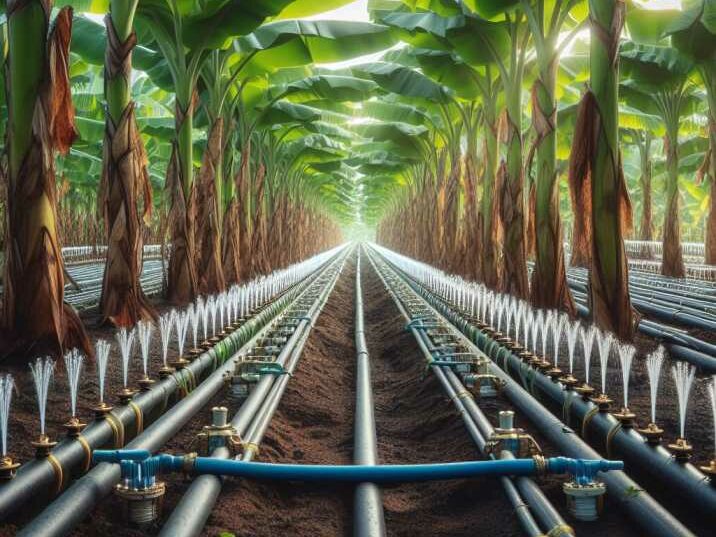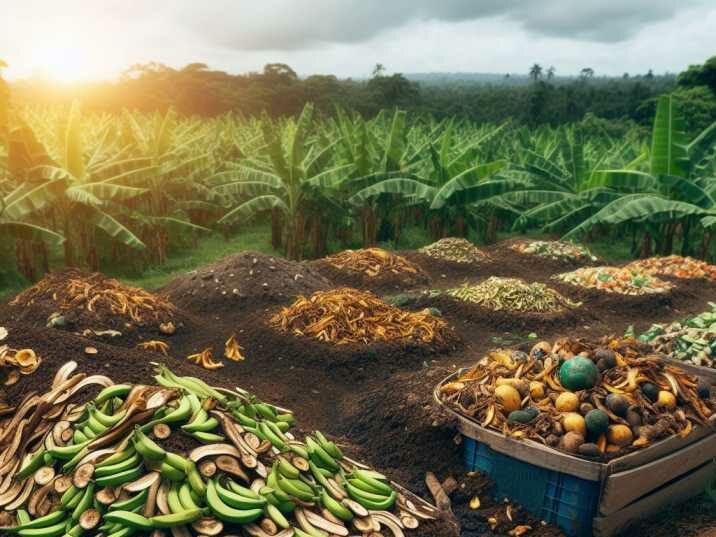Introduction:
Table of Contents
Welcome to a deep dive into the world of sustainable farming practices employed in the cultivation of Cavendish bananas. In this comprehensive guide, we’ll explore various eco-friendly techniques used by farmers to ensure the health of both the environment and their crops. From soil management to pest control, each aspect plays a crucial role in sustainable banana farming.
Sustainable Farming Practices are Employed in the Cultivation of Cavendish Bananas
Soil Management:
- Soil Health and Fertility: Maintaining optimal soil health is essential for Cavendish banana cultivation. Farmers employ techniques such as crop rotation, cover cropping, and composting to enrich the soil with essential nutrients.
- Soil Conservation: To prevent soil erosion and degradation, farmers utilize methods like contour plowing, terracing, and mulching. These practices help retain moisture and nutrients in the soil, promoting healthy banana growth.
Water Conservation:
- Drip Irrigation: Unlike traditional overhead irrigation methods, drip irrigation delivers water directly to the base of the plants, minimizing water waste and promoting efficient water usage.

- Rainwater Harvesting: Farmers implement rainwater harvesting systems to capture and store rainwater for irrigation purposes, reducing dependency on groundwater sources and conserving water resources.
Integrated Pest Management (IPM):
- Biological Control: Instead of relying solely on chemical pesticides, farmers introduce natural predators and beneficial organisms to control pest populations. Ladybugs, predatory mites, and nematodes are examples of biocontrol agents used in Cavendish banana cultivation.
- Cultural Practices: Crop rotation, intercropping, and maintaining biodiversity in the banana plantation help disrupt pest cycles and reduce the need for chemical interventions.
Organic Farming Practices:
- Organic Fertilization: Farmers utilize organic fertilizers such as compost, manure, and organic matter to nourish banana plants without synthetic chemicals. These natural fertilizers improve soil structure and microbial activity.
- Non-Chemical Weed Control: Mulching, hand weeding, and mechanical cultivation are preferred over herbicides to manage weed growth in organic banana farms. These methods are environmentally friendly and support soil health.
Biodiversity Conservation:
- Agroforestry Systems: Integrating banana cultivation with other plant species, such as legumes or fruit trees, creates diverse agroecosystems. This approach enhances biodiversity, provides habitat for beneficial organisms, and improves overall farm resilience.
- Habitat Restoration: Farmers participate in habitat restoration projects by preserving natural areas within or adjacent to banana plantations. These efforts protect native species, promote pollination, and maintain ecosystem balance.
Waste Management:
- Composting: Organic waste generated during banana production, such as crop residues and fruit peels, is composted to produce nutrient-rich organic fertilizer. Composting reduces waste sent to landfills and closes the nutrient loop on the farm.
- Recycling and Reuse: Farmers implement recycling programs for packaging materials and utilize reusable containers for transporting bananas. Minimizing waste and promoting sustainable practices throughout the supply chain is crucial for environmental conservation.

Carbon Footprint Reduction:
- Renewable Energy: Investing in solar panels and other renewable energy sources helps reduce the carbon footprint of banana farms. By harnessing clean energy, farmers decrease reliance on fossil fuels and contribute to mitigating climate change.
- Transportation Efficiency: Optimizing transportation routes and adopting eco-friendly transport options, such as electric vehicles, helps minimize emissions associated with banana distribution. Sustainable logistics play a vital role in reducing the environmental impact of the entire supply chain.
table summarizing key information about sustainable farming practices in Cavendish banana cultivation:
| Sustainable Farming Practice | Description |
|---|---|
| Soil Management | Techniques include crop rotation, cover cropping, and composting to maintain soil fertility and prevent erosion. |
| Water Conservation | Utilizes drip irrigation and rainwater harvesting systems to minimize water waste and promote efficient usage. |
| Integrated Pest Management | Implements biological control and cultural practices to manage pests without relying solely on chemical pesticides. |
| Organic Farming Practices | Utilizes organic fertilizers and non-chemical weed control methods to nourish plants and support soil health. |
| Biodiversity Conservation | Integrates agroforestry systems and participates in habitat restoration to enhance biodiversity on the farm. |
| Waste Management | Involves composting organic waste and implementing recycling programs to minimize environmental impact. |
| Carbon Footprint Reduction | Utilizes renewable energy sources and optimizes transportation routes to reduce emissions throughout the supply chain. |
This table provides a concise overview of the sustainable farming practices discussed in the blog post, allowing readers to grasp the key concepts at a glance.
Conclusion:
In conclusion, sustainable farming practices are integral to the cultivation of Cavendish bananas, ensuring environmental responsibility and long-term viability for farmers. By prioritizing soil health, water conservation, integrated pest management, organic practices, biodiversity conservation, waste management, and carbon footprint reduction, banana growers contribute to a more sustainable agricultural sector. Embracing these eco-friendly techniques not only benefits the environment but also supports healthier ecosystems, resilient farms, and a more sustainable future for generations to come.
With a focus on sustainability, Cavendish banana cultivation continues to evolve, demonstrating the importance of responsible farming practices in meeting the demands of today’s global food supply while safeguarding the planet for tomorrow.
Frequently asked questions (FAQs)
- FAQ: How do sustainable farming practices benefit Cavendish banana cultivation?
- Sustainable farming practices benefit Cavendish banana cultivation in several ways. Firstly, they promote soil health and fertility, ensuring optimal conditions for banana growth. Secondly, these practices help conserve water resources by minimizing wastage through efficient irrigation methods. Thirdly, by implementing integrated pest management techniques, farmers can control pests without harming the environment or compromising crop quality. Overall, sustainable practices contribute to healthier ecosystems, resilient farms, and long-term viability for banana growers.
- FAQ: Are sustainable farming practices more labor-intensive compared to conventional methods?
- While some sustainable farming practices may require additional labor initially, the long-term benefits outweigh the labor costs. For example, organic weed control methods such as mulching and hand weeding may require more manual labor than chemical herbicides. However, these practices promote soil health and biodiversity while reducing reliance on synthetic chemicals. Similarly, integrated pest management techniques may involve monitoring pest populations and implementing biological control measures, which could require more attention from farmers. Ultimately, the investment in sustainable practices leads to improved soil quality, reduced environmental impact, and healthier crops.
- FAQ: How do sustainable farming practices contribute to environmental conservation in banana cultivation?
- Sustainable farming practices play a crucial role in environmental conservation within banana cultivation. By prioritizing soil management techniques such as composting and mulching, farmers improve soil health and reduce erosion, preventing sediment runoff into waterways. Water conservation practices like drip irrigation and rainwater harvesting minimize water usage and reduce pressure on freshwater sources. Integrated pest management methods minimize the use of chemical pesticides, thereby reducing chemical runoff and preserving water quality. Additionally, sustainable practices such as agroforestry and habitat restoration enhance biodiversity, providing habitat for native species and supporting ecosystem resilience. Overall, these practices contribute to a more sustainable and environmentally friendly approach to banana cultivation.
